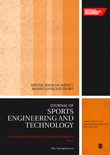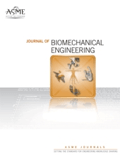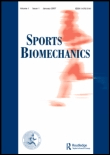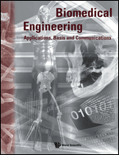
Applied Bionics and Biomechanics
Scope & Guideline
Unleashing Potential through Applied Bionics and Biomechanics
Introduction
Aims and Scopes
- Bionic System Design and Control:
Research on the design, development, and control of bionic systems, such as exoskeletons and robotic limbs, for rehabilitation and assistance in human movement. - Biomechanical Analysis and Modeling:
Studies that utilize biomechanical modeling and analysis to understand human movement, injury mechanisms, and the effects of various interventions on physical performance. - Rehabilitation Engineering:
Research dedicated to the engineering aspects of rehabilitation, including the development of assistive technologies and strategies for enhancing recovery in patients. - Artificial Intelligence in Biomechanics:
Integration of AI techniques for data analysis, predictive modeling, and optimization in biomechanics research and applications. - Innovative Material Applications:
Exploration of new materials and their applications in bionic devices and biomechanical systems, focusing on biocompatibility and functionality.
Trending and Emerging
- Wearable Robotics and Sensors:
The development and application of wearable robotics and sensors for monitoring and enhancing human performance in various settings, particularly in sports and rehabilitation. - AI and Machine Learning Applications:
An increasing number of studies are utilizing AI and machine learning techniques to analyze biomechanical data, optimize rehabilitation protocols, and personalize treatment plans. - Bio-inspired Design and Biomimetics:
Research focused on bio-inspired engineering and design, particularly in creating devices that mimic biological systems for improved performance and efficiency. - Telemedicine and Remote Monitoring:
The rise of telemedicine has prompted research into remote monitoring technologies that facilitate rehabilitation and health management outside traditional clinical settings. - Multidisciplinary Approaches to Health and Performance:
A trend towards integrating insights from various disciplines, including psychology, physiology, and engineering, to address complex health and performance challenges.
Declining or Waning
- Traditional Rehabilitation Techniques:
There is a noticeable decline in research focused on conventional rehabilitation techniques, as newer technologies and methods gain popularity and relevance. - Basic Biomechanics Studies:
Basic studies in biomechanics that do not integrate advanced technologies or applications are becoming less common, as the focus shifts towards applied and interdisciplinary research. - Non-Bionic Assistive Devices:
Research on non-bionic assistive devices is less prevalent, possibly due to the increasing emphasis on bionic solutions that offer greater functionality and user adaptation.
Similar Journals

JOURNAL OF BIOMECHANICS
Charting New Frontiers in Biomechanical AnalysisJOURNAL OF BIOMECHANICS is a premier journal published by Elsevier Science Ltd, renowned for its impactful contributions to the field of biomechanical research since its inception in 1968. With an ISSN of 0021-9290 and an E-ISSN of 1873-2380, this journal serves as a vital resource for researchers, practitioners, and students invested in the interdisciplinary domains of Biomedical Engineering, Biophysics, Orthopedics, Sports Medicine, and Rehabilitation. The journal consistently ranks in the Q1 and Q2 quartiles across several categories, reflecting its dedication to high-quality and innovative research, as evidenced by its impressive Scopus rankings—particularly within Medicine Rehabilitation (Rank #23/161). Despite being a subscription-based journal, it offers crucial insights into mechanical analysis and applications that enhance our understanding of human movement and performance. With projections of coverage extending to 2024, the JOURNAL OF BIOMECHANICS remains an indispensable platform for disseminating cutting-edge research that drives advancements in health, performance, and injury rehabilitation.

Advanced Biomedical Engineering
Advancing the future of health through engineering excellence.Advanced Biomedical Engineering is a peer-reviewed open access journal published by the Japanese Society for Medical & Biological Engineering, dedicated to disseminating high-quality research in the multidisciplinary fields of biomedical engineering. Boasting an ISSN of 2187-5219, this journal has been pivotal since its inception in 2018, especially as it embraces the open access model to foster knowledge sharing and wide accessibility. Centered in Tokyo, Japan, it serves as a vital platform for scholars and practitioners across various domains, such as biomaterials, biomedical engineering, and biotechnology. Despite currently residing in the Q4 quartile across several categories, including those in biotechnology and computer science applications, the journal is committed to elevating its academic impact and reputation, aiming for improved rankings in Scopus and other databases. Researchers and professionals are encouraged to contribute their innovative findings, discussions, and case studies, facilitating the advancement of this dynamic field.

Proceedings of the Institution of Mechanical Engineers Part P-Journal of Sports Engineering and Technology
Pioneering Research at the Intersection of Engineering and SportsProceedings of the Institution of Mechanical Engineers Part P-Journal of Sports Engineering and Technology, published by SAGE Publications Ltd, stands as a prominent platform for scholars and professionals within the fields of engineering and sports science. With an ISSN of 1754-3371 and an E-ISSN of 1754-338X, this journal, based in the United Kingdom, has been actively contributing to the academic discourse from 2008 and will continue to do so until 2024. Recognized in 2023 with a Q2 ranking in Engineering (miscellaneous) and a Q3 ranking in Sports Science, it holds a respectable position within the academic community, as indicated by its Scopus rank of #106/307, placing it in the 65th percentile of general engineering publications. The journal aims to publish high-quality research that advances the understanding of sports engineering, addressing innovative technologies and methodologies that enhance athletic performance and sports equipment design. With its commitment to integrating principles of mechanical engineering with sports applications, this journal serves as a crucial resource for researchers, industry professionals, and students eager to explore the intersection of these dynamic fields.

JOURNAL OF BIOMECHANICAL ENGINEERING-TRANSACTIONS OF THE ASME
Exploring the Intersection of Engineering and PhysiologyJOURNAL OF BIOMECHANICAL ENGINEERING-TRANSACTIONS OF THE ASME, published by the esteemed ASME (American Society of Mechanical Engineers), has been a leading platform for scholarly communication in the fields of biomedical engineering and physiology since its inception in 1977. With a focus on advancing the understanding of the mechanics of biological systems, this journal serves as an invaluable resource for researchers, professionals, and students alike. Despite its current 2023 quartile ranking of Q3 in both Biomedical Engineering and Physiology (Medical), it provides a critical forum for innovative research and comprehensive reviews that contribute to ongoing developments in biomechanical engineering. The journal's contributions span a wide array of topics, reinforcing its significance in bridging the gap between engineering principles and biological applications, thus fostering interdisciplinary research aimed at enhancing human health. The journal is accessible in both print and electronic formats, ensuring wide dissemination of its impactful findings.

Wearable Technologies
Innovating Rehabilitation Through Smart Wearable TechnologiesWearable Technologies is an esteemed peer-reviewed journal published by CAMBRIDGE UNIV PRESS, focusing on the innovative intersection of technology and healthcare. Since its establishment in 2020, this Open Access journal has garnered significant recognition in the field of Biomedical Engineering, with a remarkable impact factor reflected in its top-tier rankings—Q1 in Biomedical Engineering and Rehabilitation, and Q2 in Human-Computer Interaction. Positioned as a leader in its domain, Wearable Technologies continually explores the advancements and applications of wearable devices, facilitating groundbreaking research that enhances user interaction and rehabilitation outcomes. With its robust Scopus rankings—including a 92nd percentile in Medicine Rehabilitation—this journal serves as an invaluable resource for researchers, professionals, and students keen on advancing the understanding and application of wearables in various fields. Based in Cambridge, United Kingdom, it aims to stimulate scholarly conversation and disseminate pivotal discoveries that shape the future of both technology and healthcare.

Journal of Theoretical and Applied Mechanics
Connecting Researchers and Practitioners in MechanicsJournal of Theoretical and Applied Mechanics, published by the Polish Society of Theoretical and Applied Mechanics, stands as a leading platform for disseminating cutting-edge research in the realms of theoretical and applied mechanics. With its ISSN 1429-2955 and E-ISSN 1429-2955, this Open Access journal has been fostering academic dialogue since 2006, making knowledge readily accessible to researchers and practitioners alike. Based in Warsaw, Poland, the journal encompasses a wide breadth of topics within mechanics, appealing to a diverse readership including researchers, professionals, and students. The journal's current Scopus ranking places it within the 30th percentile of the field, emphasizing its relevance and contribution to the discipline. As it converges from 2007 to 2024, the Journal of Theoretical and Applied Mechanics is pivotal for those seeking to advance understanding and innovation in mechanical engineering and mathematics, making it an essential resource for anyone involved in these critical areas of study.

Sports Biomechanics
Pioneering Research in Orthopedics and Sports TherapySports Biomechanics, a prominent journal published by ROUTLEDGE JOURNALS, TAYLOR & FRANCIS LTD, serves as a critical platform for researchers and professionals in the fields of orthopedics, sports medicine, and rehabilitation. With an ISSN of 1476-3141 and an E-ISSN of 1752-6116, this journal has been influential since its inception in 2002 and is set to continue making an impact until 2024. The journal holds respectable positions within various quartiles, specifically Q2 in Orthopedics and Sports Medicine, Q2 in Physical Therapy, Sports Therapy and Rehabilitation, and Q3 in Sports Science as of 2023. Its Scopus rankings further underscore its significance in the academic community, ranking 35th in Physical Therapy and 55th in Orthopedics. Although not an Open Access journal, Sports Biomechanics provides a robust forum for disseminating cutting-edge research that enhances the understanding of human movement, injury prevention, and the rehabilitation process, making it an invaluable resource for students, academics, and practitioners dedicated to advancing the science of sports biomechanics.

Journal of Bionic Engineering
Fostering Interdisciplinary Collaboration for Real-World ImpactJournal of Bionic Engineering is a prominent publication in the field of bioengineering, biophysics, and biotechnology, published by Springer Singapore Pte Ltd. Since its inception in 2006, this journal has provided a vital platform for researchers and professionals to disseminate groundbreaking work and innovative approaches in the rapidly evolving realm of bionic systems and biomimetic technologies. With an impact factor that reflects its quality and relevance, it is currently positioned in the Q2 quartile across several key categories, underscoring its substantial influence in academia. The journal is indexed in Scopus, where it ranks competitively in biochemistry, genetics, molecular biology, and chemical engineering, showcasing its appeal to a broad spectrum of scientific disciplines. Although it does not offer open access, it remains a critical resource for those engaged in advanced research and development, fostering connections among scholars, practitioners, and educators dedicated to pushing the boundaries of bionic engineering. As the journal continues to converge from 2006 to 2024, it aims to uphold its mission of promoting interdisciplinary research that contributes to the understanding and application of bionic technologies in solving real-world challenges.

BIOMEDICAL ENGINEERING-APPLICATIONS BASIS COMMUNICATIONS
Bridging technology and medicine for a healthier world.BIOMEDICAL ENGINEERING-APPLICATIONS BASIS COMMUNICATIONS is a prominent journal dedicated to the dynamic field of biomedical engineering, published by WORLD SCIENTIFIC PUBL CO PTE LTD. Since its inception in 1992, the journal has provided a platform for the dissemination of high-quality research and innovative applications within the biomedical engineering domain. Despite its current Q4 ranking in multiple categories such as Bioengineering and Biomedical Engineering, the journal serves as an essential resource for researchers and professionals seeking to explore the latest developments and practical applications in this interdisciplinary field. The journal is based in Singapore, reflecting the region's growing influence in scientific research and technology. Although it does not offer open access, it continues to attract submissions that enrich the scientific dialogue within its community. With a commitment to fostering knowledge and research collaboration, this journal remains a vital contributor to the ongoing advancements in biomedical technology and engineering.

IRBM
Catalyzing Transformative Ideas in Life Sciences ResearchIRBM, published by Elsevier Science Inc, stands at the forefront of research in the domains of Biomedical Engineering and Biophysics, boasting impressively high rankings with a Q1 category in both fields according to the 2023 evaluations. With an effective focus on cutting-edge innovations and methodologies, IRBM provides a vital platform for researchers, professionals, and students alike seeking to disseminate and access groundbreaking findings and developments. Its strong presence in the Scopus database, with ranks of #12 in Biochemistry, Genetics and Molecular Biology and #42 in Biomedical Engineering, places it in the top percentile of impactful journals in the field, making it a crucial resource for advancing knowledge and fostering collaboration. While the journal maintains a traditional subscription model, it continues to attract a diverse readership eager for insightful studies and reviews that push the boundaries of science and engineering. With a projected convergence of years extending to 2024, IRBM promises to remain a significant contributor to the ongoing dialogue in the life sciences.